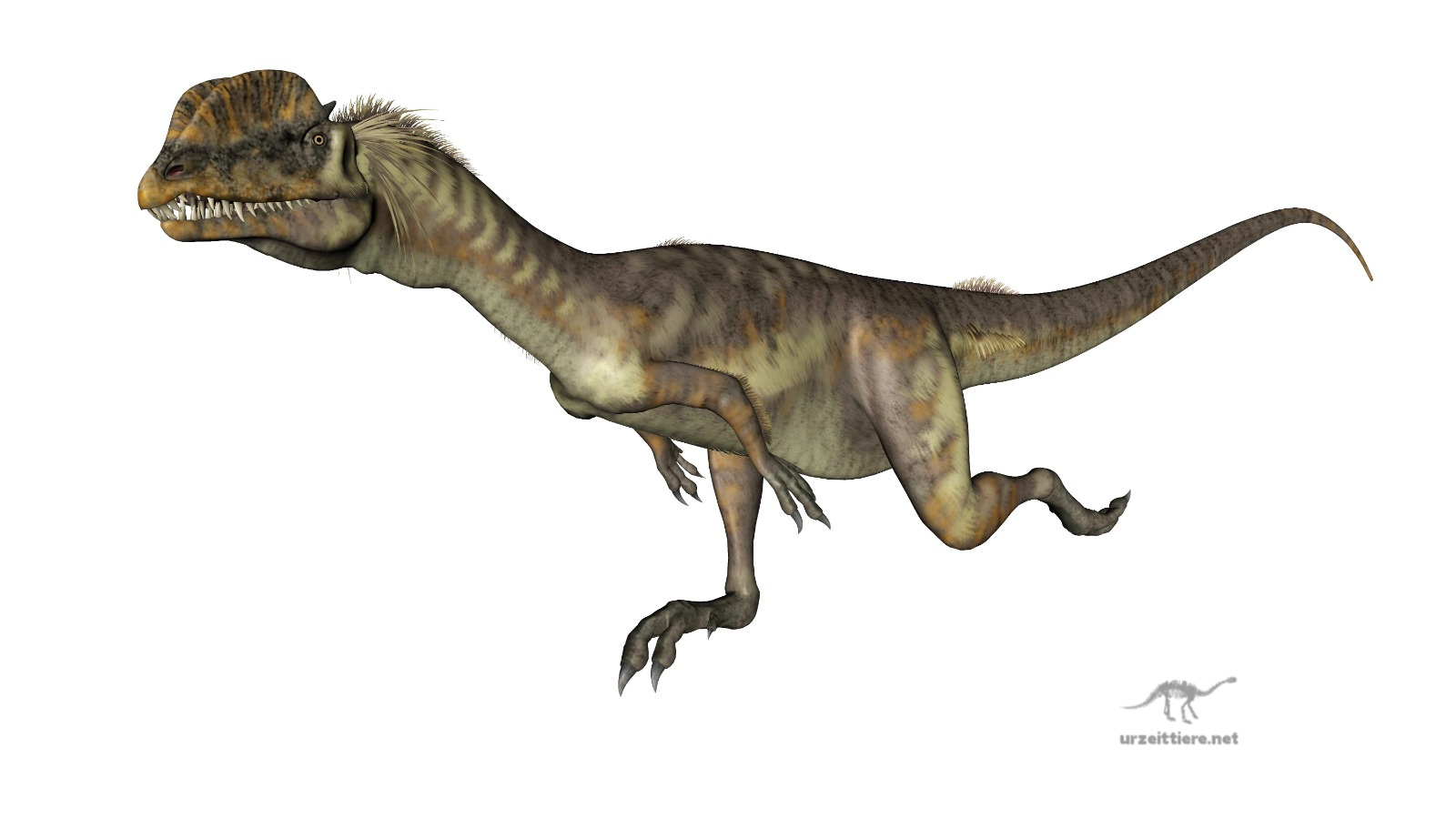
Despite the fact that it has been over 65 millions since dinosaurs went extinct, it is no wonder how fascinated we are by these magnificent creatures even today. To date, about 700 species of dinosaurs have been identified and named. It is amazing how so many different types of dinosaurs existed, each with varying qualities.
One interesting dinosaur was the Dilophosaurus, also known as the two-crested lizard. Among the predatory dinosaurs, the Dilophosaurus was one of the earliest species. This was a very large, bipedal dinosaur and was a meat-eater.
The Dilophosaurus was a member of the theropods but was considered medium-sized in this classification as other members were even bigger. This does not mean it was small by any means. This dinosaur looked much like a lizard, but it was over 20 feet long. And it weighed over 400 kgs.
Yet, it had a slender build and its main characteristics were the two raised crests of thin bone that protruded from its head. The exact shape of the crest is still unknown. Their skull was quite large in proportion to the dinosaur's body. And this dinosaur also had a narrow stout.
Furthermore, the Dilophosaurus had long, thin, curved and sharp teeth which were larger in the upper jaw. With a long neck, powerful arms, and large claws, we can imagine that this dinosaur would be a sight to see.
Here's an interesting fact about the Dilophosaurus: the species was named this to honor a Navajo council, John Wetherill. Even an infant of this specimen was identified, as well as its' footprints and resting traces.
| Profile | Name |
|---|---|
| Prehistoric Era | Early Jurassic, about 193 million years ago |
| Order | Saurischia |
| Suborder | Theropoda |
| Family | Dilophosauridae |
| Tribe | |
| Genus | Dilophosaurus |
| Species | Dilophosaurus wetherilli |
| Height | 2.5 meters (5.0 ft) at the hips |
| Length | 6.00 meters (20.0 ft) |
| Weight | 0.5 tons |
| Territory | Arizona (USA) |
According to the information we have today, the Dilophosaurus moved very fast.
As it had a kink in the upper jaw, this indicated that it could grip and hold on to its prey when attacking. This is a style similar to the modern crocodiles we see today.
There are some speculations that Dilophosaurus had a frill and was able to spit venom. But there is no scientific evidence to back this up.
In fact, recent research indicates that the Dilophosaurus was not venomous at all and did 'not' spit poison. However, it was shown to use a frill to spit poison in the Jurassic Movies, which leads many people to believe so.
While its overall appearance was quite similar to a lizard, the Dilophosaurus wetherlli actually had many traits similar to birds.
In fact the most recent evidence suggests that the dinosaur was more bird than a lizard. This is because some of their bones were found to have air-pockets similar to the modern birds' anatomy. These air pockets reduced the bulk and help birds to take flight. This new information makes the Dilophosaurus even more fascinating.
Although the Dilophosaurus was one of the oldest dinosaur species to inhabit the earth, there is not much that we truly know about it. In fact, it is still being highly researched upon and was refered to as 'The Best Worse-Known Dinosaur'.
References:
https://www.sciencedaily.com/releases/2020/07/200707183920.htm
Featured image: ©urzeittiere.net
Skull: Sebastian Bergmann from Siegburg, Germany, CC BY-SA 2.0 https://creativecommons.org/licenses/by-sa/2.0, via Wikimedia Commons
Size comparison: Matt Martyniuk & Ville Sinkkonen, CC BY 3.0 https://creativecommons.org/licenses/by/3.0, via Wikimedia Commons
Skeleton: Craig Pemberton, CC BY-SA 2.0 https://creativecommons.org/licenses/by-sa/2.0, via Wikimedia Commons